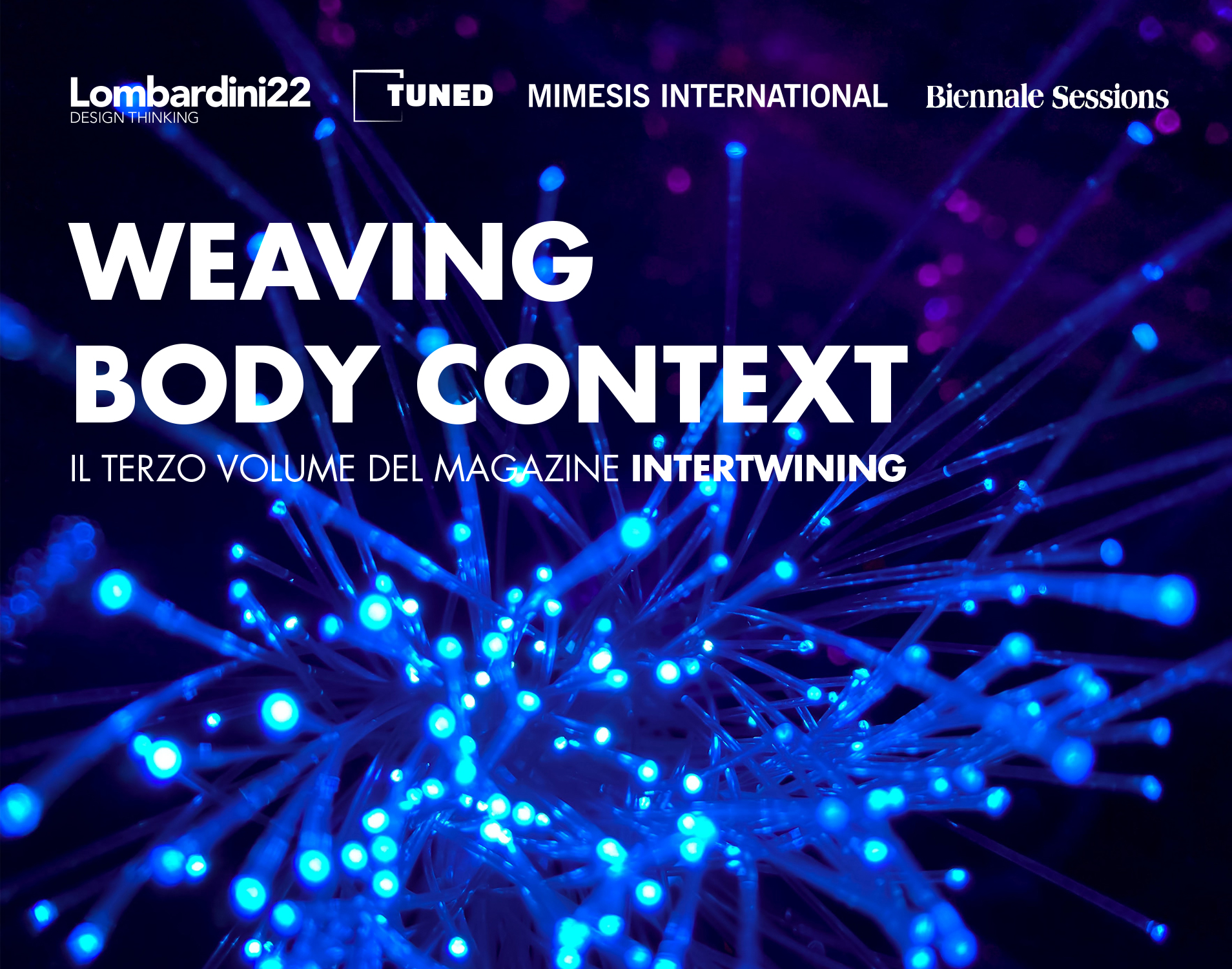On May 22, the third edition of the Intertwining magazine, directed by architects Davide Ruzzon, Sarah Robinson and Alessandro Gattara, entitled Weaving Body Context, was presented in Venice on the occasion of the opening of the 2021 Architecture Biennale.
Never, as in this period, speaking of context, in light of the latest dramatic events due to the Covid-19 pandemic, is more appropriate. As architect Davide Ruzzon has repeatedly stated, in fact, the pandemic has revealed how important the contextual conditions in which we live are for our well-being. In the last 30 years
«The context has disappeared from the discourse of architecture. We talked about buildings, facades, architectural elements, but not about the context. Context has been removed. Now, after the pandemic, we should go back to talking about it, focusing the debate on the relationship between mind / body and context. »
Davide Ruzzon

The series of interventions were opened by Adolfo Suarez, who explained the reasons why Lombardini22, of which he is a founding member, decided to undertake new disciplinary paths linked to neuroscience and environmental psychology, supporting Tuned, of which Davide Ruzzon is director and the magazine Intertwining:
«We are strongly convinced that architecture must be founded not only on conceptual and design analysis but even on the concrete experience of those who have to live the space we are going to design.»
Adolfo Suarez

This has been followed by architects, neuroscientists and environmental psychologists, who have outlined the common thread that links their research to the great topic: the context.
Sarah Robinson, architect and researcher, underlined how the idea of the name “INTERTWINING” was derived from the concept, articulated by Merleau-ponty, of “intertwining”, according to which the way we perceive architecture is based on the very strong interaction that develops between our body and the environment.
««This magazine is, therefore, a way to explore this interaction between our body, our mind and the space we inhabit and offers the ground for a discussion on the latest research in this area.»
Sarah robinson

The architectural example in which this idea of ”resonance” between environment and body is deeply felt, was provided by Klaske Havik, professor of Methods of Analysis of Imagination at Delft University, who, through a series of “experiential fragments“, excerpts from his article Breathing body, described the Mercado Libertad in Guadalajara, Mexico, designed by architect Alejandro Zohn, evoking the embodied experience that people live in those spaces at different times of the day..
«The city is something that can breathe, like a “moving, pulsing, and breathing animal”. […] I had this sensation when I visited Guadalajara. […] a very vibrating city in which I resonated with it.»
Klaske Havik

Indian architecture possesses in its DNA the concept of threshold as a place where tale, imagination and experience develop. According to Meghal Arya this is the key to tune contemporary design on emotional frequencies and on the spatial experience of everyday life, because the in-between spaces, those that divide the inside from the outside, the night from the day and, why not, the human being from the beast (to take up the themes of Indian tales),
«They allow life to happen in its multiple ways.»
Meghal Arya
Even Marcus Weisen talked about threshold, arguing the need to work not only on physical boundaries but also on psychological ones.
«To the question posed by this year’s Bienniale, How will we live together? I reply that we need to change our boundaries, even those between us and ourselves. We can do this only by working on the threshold.»
Marcus wiesen
The architect and neuroscientist Isabella Pasqualini, in addition to stressing the importance of going beyond one’s own borders to draw on different disciplinary fields, has launched an appeal to young people, inviting them to open up to the new tools they have at their disposal because technology, at the contrary to what is feared and in the light of what happened in this terrible year, it is a fundamental support that
«It doesn’t replace humans beings, it helps them thinking.»
isabella pasqualini

